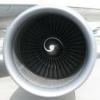
Sign in to follow this
Followers
0

Debugging the ASA build 435 errant TAT problem, found likely cause
By
Lek767, in The AS16 and ASCA | Active Sky | Active Sky Next | XPAX Support Forum


By
Lek767, in The AS16 and ASCA | Active Sky | Active Sky Next | XPAX Support Forum